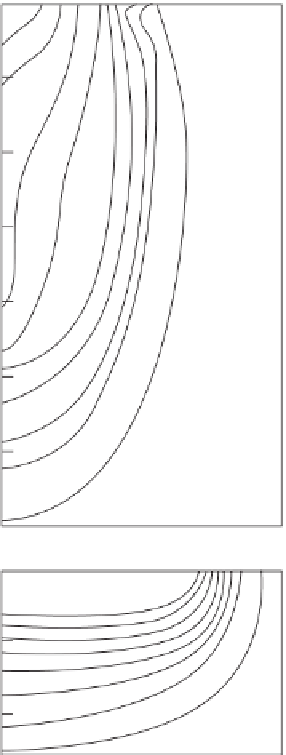Agriculture Reference
In-Depth Information
because soil evaporation rates are much lower than with surface applications.
Emitter spacing and discharge rate depend on the vine spacing and soil texture,
because the aim, particularly in dry regions, is to have a continuous band of moist
soilintherows.SpecialisttextssuchasNicholas(2004)andPritchardetal.(2004)
give details of the types of dripper available and installation methods.
The wetting pattern under an emitter changes with soil texture. The suction
force pulling water sideways and downward is small in sand and sandy loams
becauseoftheirlargepores,andgravitypredominates(igure4.26A).Insuch
soils the emitters can be as close as 0.5 m and, given the high infiltration rate,
thedischargeratecanbeasmuchas4L/hour.Asthetextureincreasestoclay
(a)
Dripper
0
10
20
30
40
50
60
Sandy
loam
70
0
(b)
Figure 4.26
(A)Patternofwetting
under a dripper in sandy soil of high
permeability.(B)Patternofwetting
under a dripper in clay soil of low
permeability.(Redrawnfrom
White,2006.)
10
20
Clay


